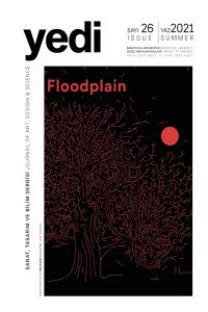Bir Serginin Ardından: Postmodern Mimarlık ve Yansıtmalı Yaklaşımlar
-
-
Postmodern Architecture, Theory After Theory, Post-critical, Pragmatism Projective Practice,
___
- Adamson G., Pavitt J. ( 2011). Style and Subversion,1970 –1990, Victoria and Albert Museum, South Kensington, Londra: V&A Publishing.
- Baird, George (2004). “Criticality and its Discontents”. Harvard Design Magazine (21): 1-6.
- Davies, Christie (2011). “Exhibition Notes”, The New Criterion (12): 54-56.
- Groat, Linda (1992). “Rescuing Architecture from Cul-de-Sac”. Journal of Architectural Education 45(3): 138-146.
- Jameson, Fredric (1991). “Postmodernism and Consumer Society”, Anti-Aesthetic, ed. Hal Foster, Washington: Bay Press.
- Jarzombek, Mark (2002). “Last Words: Critical or Post-Critical?” Architectural Theory Review 7(1): 49-152.
- Mallgrave F., Goodman D. (2011). An Introduction to Architectural Theory, 1968 to the Present, UK, Wiley-Blackwell.
- Martin, Reinhold (2005). “Critical of What”. Harvard Design Magazine (22): 1-6.
- Menking, William (2012). “Postmodernism: Style and Subversion 1970–1990”, Journal of Architectural Education 66(1): 25-27.
- Schrijver, Lara ( 2009). “Whatever happened to Projective Architecture? Rethinking the Expertise of the Architect”, Footprint, Agency in Architecture: Reframing Criticality in Theory and Practice, Spring, 123-127.
- Somol R., Whiting S. (2002). “Notes Around The Doppler Effect and Other Moods of Modernism”, Perspecta, The Yale Architectural Journal, (33): 72-77.
- Sykes, Krista. (2010). “Introduction”. Constructing A New Agenda, Architectural Theory 1993-2009, ed. Krista Sykes, New York, Princeton Architectural Press, s:14-30. Internet Kaynakları
- Barrie, Andrew (2014). “Cardboard Cathedral by Shigeru Ban in Christchurch, New Zealand”.http://www.architectural- review.com/buildings/cardboard-cathedral-by- shigeru-ban-in-christchurch-new-zealand/8654513. article# (30.12.2014).
- Fischer, Ole (2007). “Atmospheres – Architectural Spaces between Critical Reading and Immersive Presence”. http://www.field-journal.org/uploads/file/ 2007_ Volume_ 1/o%20 fischer.pdf (25.12.2014).
- Roth, Martin (2014). “Postmodernism: Style and Subversion 1970-1990 at the V&A”, http://www.dezeen. com/2011/09/26/postmodernism-style-and- subversion-1970-1990-at-the-va/ (26/11/2014).
- Sooke, Alastair ( 2011). “Postmodernism: Style and Subversion: 1970-1990, V&A, review”. http://www.telegraph. co.uk/culture/art/art-reviews/8790569/ Postmodernism-style-and-subversion-1970-1990- VandA-review.html( 26/11/2014).
- Schrijver, Lara (2014). “Architecture, Projective, Critical or Craft?” Projective or Critical Practice, 353-367. http:// isites.harvard.edu/fs/docs/icb.topic1465373. files/29%20SEP%2014/Schrijver%20Architecture_ Projective_Critical_Craft.pdf (25.12.2014). Görsel Kaynaklar
- Resim ‘Postmodernism: Style and Subversion 1970 – 1990’ Adlı Serginin Girişi, www.apracticeforeverydaylife. com/victoria-and-albert-museum/postmodernism- style-and-subversion-1970-1990-exhibition- graphics/ (30.12.2014)
- Resim Yokohama Terminal Binası, (Rohaly, 2014:32).
- Resim Karton Katedral, (Barrie, 2014).
- Resim Bulanık Bina, ( Fischer, 2007).
- ISSN: 1307-9840
- Başlangıç: 2007
- Yayıncı: Dokuz Eylül Üniversitesi
Etik Modanın Temsiliyeti Bağlamında Vaatleri ve Çelişkileri: ‘Etik Moda’ Ne Kadar Etik Sunuluyor?
Renk Veren Oksitlerle Geliştirilen ‘Stoneware’ Sır Araştırmaları
Canlandırma Filmi Yapım Sürecinde Karakter Tasarım Aşaması
Bir Görsel İletişim Alanı Olarak Film Jeneriği
Sinemada Gerçeklik ve Düşsellik / Hakikat ve Yalan
Temel Tasarım Dersine İlişkin Öğrenci Görüşleri
Bir Serginin Ardından: Postmodern Mimarlık ve Yansıtmalı Yaklaşımlar
20. Yüzyılda Sanatsal Takının Gelişim Sürecinde Heykel Sanatının Etkisi
